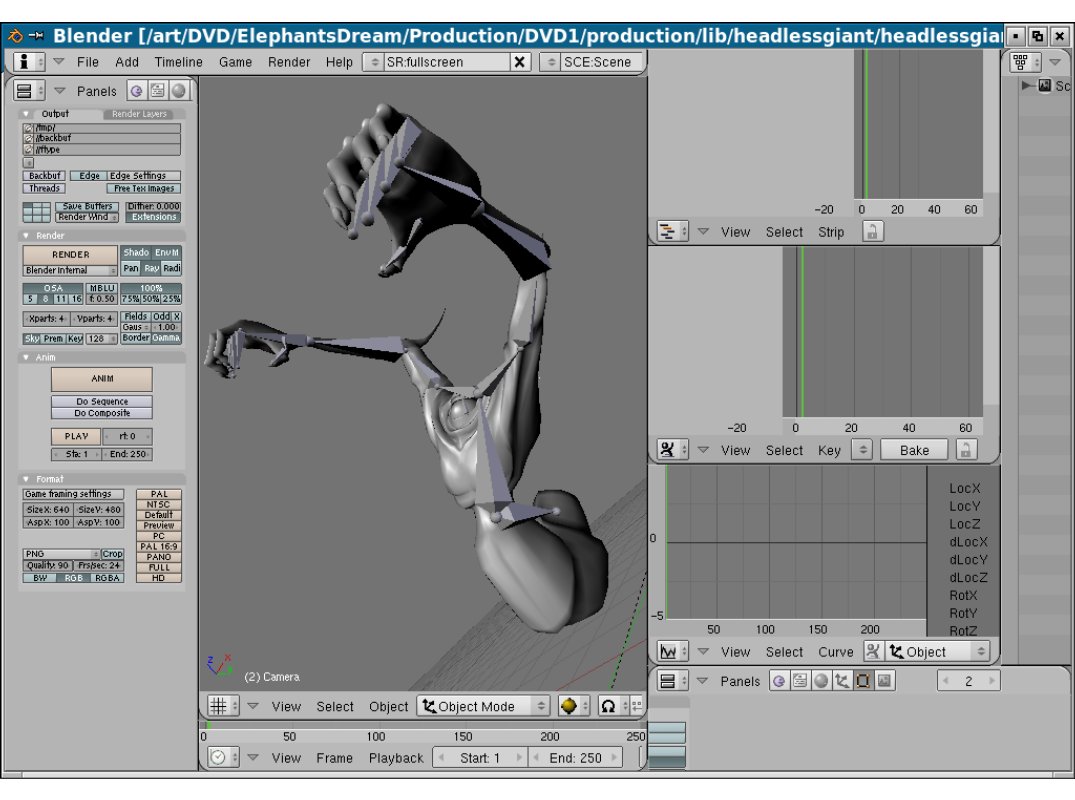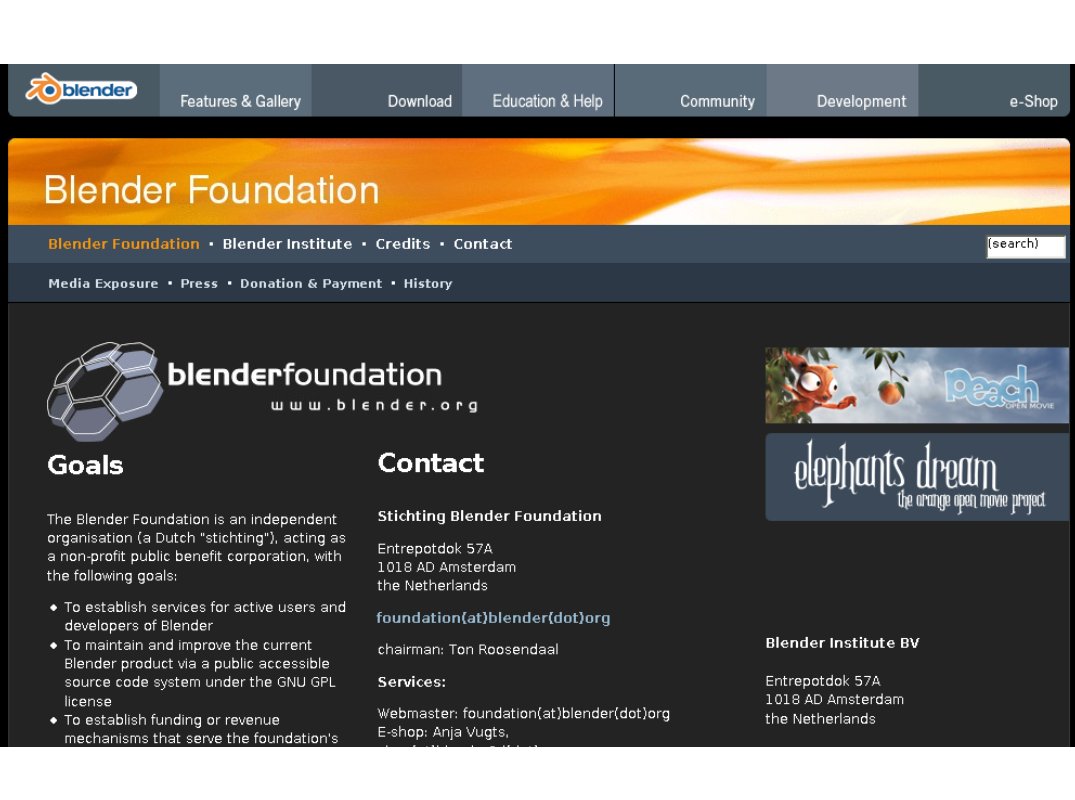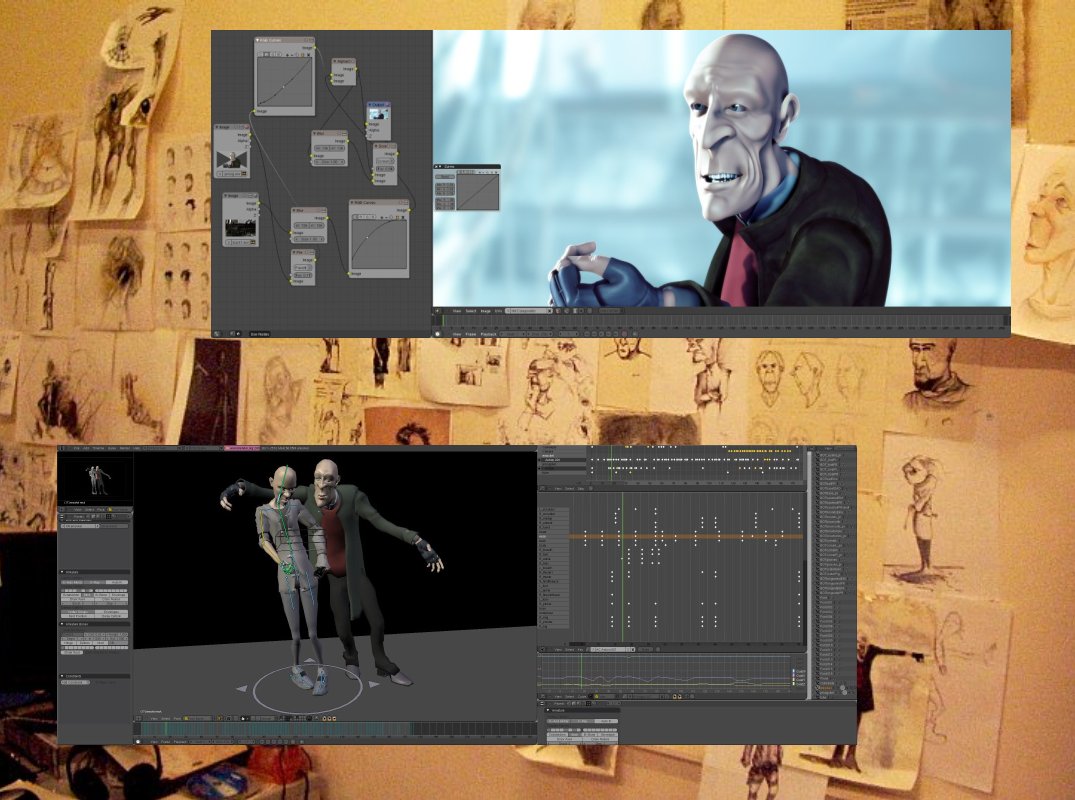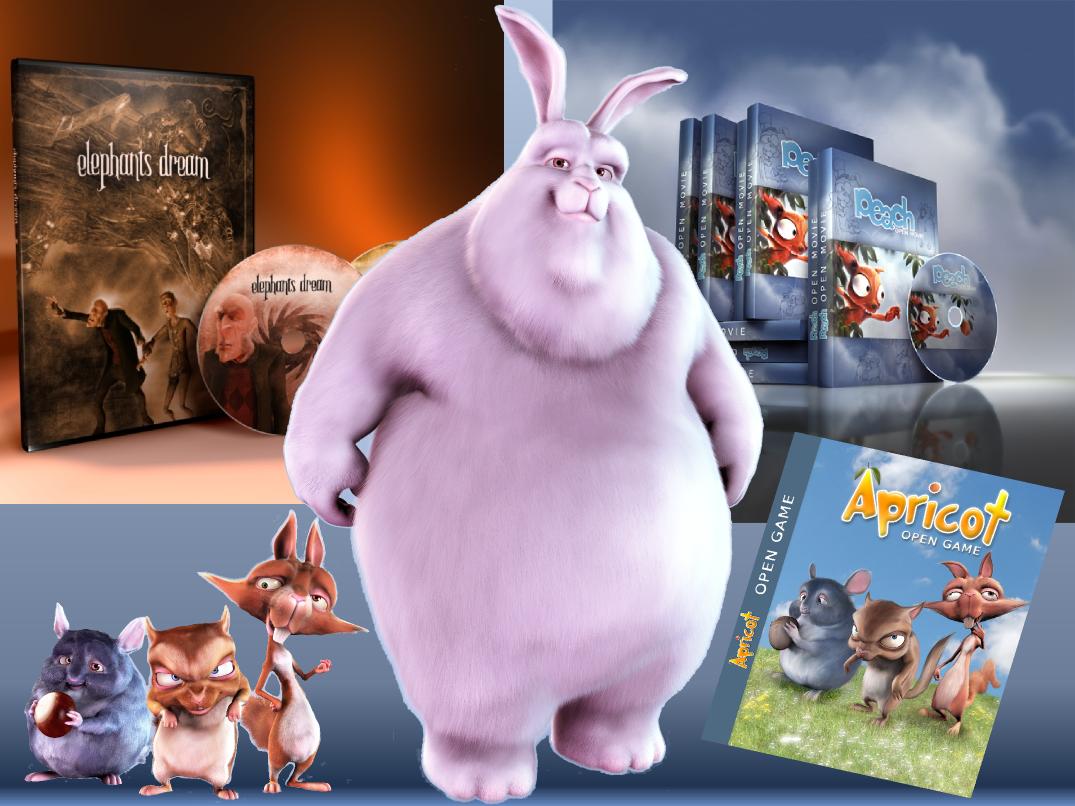The bazaar development model turns out to be amazingly versatile: it seems that most software, even things you wouldn't think would be feasible, can be developed using such an approach. But there has to be some working core software before the community will have enough interest to contribute to a project, and there are some projects where that is really too much work for one person to do.
One such area is sophisticated 3D graphics applications, like Blender (and also Computer Aided Design applications, like BRL-CAD). Such projects typically need some sort of seed project in a "cathedral" mode in order to get started. Other projects, such as creative endeavors, are simply not going to be as successful in the committee atmosphere of a community-driven project.
In such cases, there's a need to simply accumulate capital and pay people for their work. But surely this is impractical for a loosely-bound group like the free culture community? Let's look for some counter-examples.
Myth #4
"Free software is great, but some projects take real money. There's no way the community can raise those funds."
The truth is that it is hard for the free culture community to raise actual cash for projects, but it has been done. And there are parallels with mainstream culture that suggest it can be taken even further.
Starting Commercial with Blender
A number of large-scale projects in the free software world—such as Mozilla, Zope, OpenOffice.org, and Blender—started out as fairly standard commercial/proprietary development projects. During their incubation phase, the simplicity and structure of a commercial environment with capital investment and salaried programmers made their development fairly straightforward. It was only after these programs had released operational software that their supporting companies made the decision to go to free software distribution.

Most of them did this as part of a successful business plan, and their mother companies continued on in a "support and services" business model that continues into the present. But Blender was sadly a little different. In 2002, its authoring company, "Not a Number" (which provided services based on the Blender application) folded. In the proceedings, the stockholders (who owned the copyright) agreed that they would let Blender be released under a free license, if they were given a fixed payoff of €100,000 to cover the company's remaining debts.[1]
In just seven weeks, enough money was raised to pay off the Not a Number investors, and Blender was released under the GPL as promised
This was feasible because at that time, Blender was already "freeware"—that is, an application you could freely download, though no source code was provided. So there were already many people using it. As a result, the Blender Foundation was created and started taking donations. In just seven weeks, enough money was raised to pay off the Not a Number investors, and Blender was released under the GPL as promised, with all of its source code.

Afterwards, the Blender Foundation continued to work and receive donations, and those donations are spent on improving the now-free Blender. This has proved to be a very successful operation, and Blender has continued to improve both in capability and usability.
Starting Free with the Blender Foundation Movies
So, is it necessary to start such capital-intensive projects in a commercial environment with proprietary licensing to protect the bottom line? Or are there ways in which the community can collectively patronize such activities from the outset?
This is trickier, but again, the Blender Foundation provides interesting examples.
Since the best way to improve software like Blender is to use it in actual production projects, driving the development process by the demonstrated needs of users, the Blender Foundation reasoned that the best way to promote and improve Blender was to make movies with it.
Orange
Thus started the Orange Movie Project. With a projected budget of €120,000, no script and no definite story idea, but with a talented group of animators, the Blender Foundation proposed to pre-sell DVDs of the finished movie—which they would finish in about eight months. Everything the project produced would be released under a free license (the Creative Commons Attribution license).
Then, when 1000 DVDs had been sold (raising about €35,000 of seed money), the project would start work. The animators were not paid top dollar, but they did have stipends, computers, and plenty of creative space. They brainstormed, designed characters, wrote a script, developed Blender models, new tools for animating them, and ultimately created an 11 minute film, called "Elephants Dream".[2]

The movie "Elephants Dream" itself is in some ways a mixed bag. It's clearly not the greatest work of fiction ever animated, but it does have creative merit. The characters are engaging and the environment is fascinating. The story is artistic to the point of incomprehensibility, but there is a point lying underneath about the nature of sharing, artistic works, and the imagination.
More importantly, when you bought a DVD of "Elephants Dream", you weren't just buying an 11 minute movie. You were buying approximately seven gigabytes of production files
It is clear, though, that the real star of the show is Blender and the models that the Orange Project was able to create. More importantly, when you bought a DVD of "Elephants Dream", you weren't just buying an 11 minute movie. You were buying approximately seven gigabytes of production files: models, textures, python scripts for Blender, screenplays, translations, animatics, and (with the exception of the cast and crew!) everything you could possibly need to produce a derivative work from "Elephants Dream" (and I mean real derivatives, not "mix-ups").
The movie "Elephants Dream" can be thought of as just a "demo", a reference implementation of what can be done with the tools and artistic resources contained on the DVD. Legally, of course, all of that is enabled by the Creative Commons Attribution license: as long as you credit the people on the Orange Movie Project for their work, you can use it all to make your own derivative works.
Peach
Since the Orange Project was so successful, both in terms of the popularity of the movie produced and in the improvements to Blender that it facilitated, the Blender Foundation moved on to make a second film.
The Peach Open Movie project had specific orders to strike a more populist chord: it had to be cute, furry, and funny. No doubt this was partly to compensate for the shortcomings of "Elephants Dream", but it was also simply to stay diverse, so as to cover more technical territory for Blender.
It was also self-consciously decided that the mark should not be set too high, lest the film never get made. After all, "best is the enemy of good enough", and all the people pre-ordering the DVDs would be more disappointed by a film that was never finished than by one that lacked a certain artistic edge.
The Peach Project's "Big Buck Bunny" did aim for a lower artistic mark—it was, with neither prentence nor shame, a cartoon. However, unlike "Elephants Dream", it squarely hit its mark: the film is funny, cute, and genuinely entertaining to watch.
Clearly, lessons were learned from "Elephants Dream" and applied to later projects.

Apricot
Shortly after completing "Big Buck Bunny", another project, called "Apricot" produced a game based the resources from Peach, titled "Yo, Frankie!" ("Frankie" is the name of the flying squirrel in "Big Buck Bunny"). The game development process promoted development on the Blender game engine, the CrystalSpace game engine, and the support for CrystalSpace in Blender.
Relative scales
Each of these projects (and the community purchase of Blender) were capitalized within a community foundation setting, using some pioneering fund-raising techniques. There's plenty of room for improvement in these techniques, and yet they are already producing results. So it seems that indeed, it is possible to raise funds within the community for more traditional, capitalized, "cathedral" endeavors. We can do it when we need to.
It is true, however, that the scale is still much smaller than the support the community can raise in "in kind" donations of time and effort. To illustrate this, and also to give some perspective to the project, I've created a logarithmic plot of the relative monetary and monetary-equivalent investments represented by several projects, in Figure 5.

In this chart, I've collected a number of different kinds of valuations. The free software projects are evaluated in terms of estimated cost using the same "Constructive Cost Model" (COCOMO) that I used earlier to envaluate the effort on Debian GNU/Linux and other software projects. Also on this chart are some comparable reported final budgets for space development projects (on the right) and other kinds of media projects (left).
Blender appears twice on this chart: once as a software project, with a COCOMO-estimated equivalent effort cost, and once as the actual Blender Foundation buy-out sale price. Also appearing is the budget for the Orange Project (the Peach budget is estimated to be similar, but is not yet reported).
These can be seen as estimates of what the community can raise in terms of actual cash capital, as opposed to the "sweat capital" represented by free software project effort estimates. As you can see, there is a difference of nearly two orders of magnitude between the in-kind contributions to a software project like Blender and the actual cash that could be raised to buy out its license.
Communities certainly can raise funds if the community is large enough and there is a high level of trust that the contributions will produce results
On the other hand, foundation funding has been used before. Also appearing on this chart are two much larger foundation-funded projects: "Cosmos", the television series by Carl Sagan, with a reported budget of approximately US$6 million for production and US$2 million for promotion, which was funded by voluntary contributions to the American Public Broadcasting System (PBS), and the Cosmos-1 solar sail project, with a reported project cost of US$4 million, funded by voluntary contributions to the Planetary Society.
We might be inclined to discount these as comparables, but PBS's fund-raising scheme is really just a kind of "street performer protocol": every so often, they "pass the hat" through their periodic "pledge drives", in order to get viewers to contribute to their projects. They do also receive funding from other foundations and a certain amount from US federal government grants (but these are possible sources of funding for free software or open hardware projects as well).
Communities certainly can raise funds if the community is large enough and there is a high level of trust that the contributions will produce results. The free culture community has about an order of magnitude to go to catch up to such mainstream funding levels, but there's every reason to believe that the potential for that kind of growth is there.
Notes
[1] Blender Foundation History explains this in detail.
[2] "Elephants Dream" figures from Wikipedia (which is based on information from the Blender Foundation).